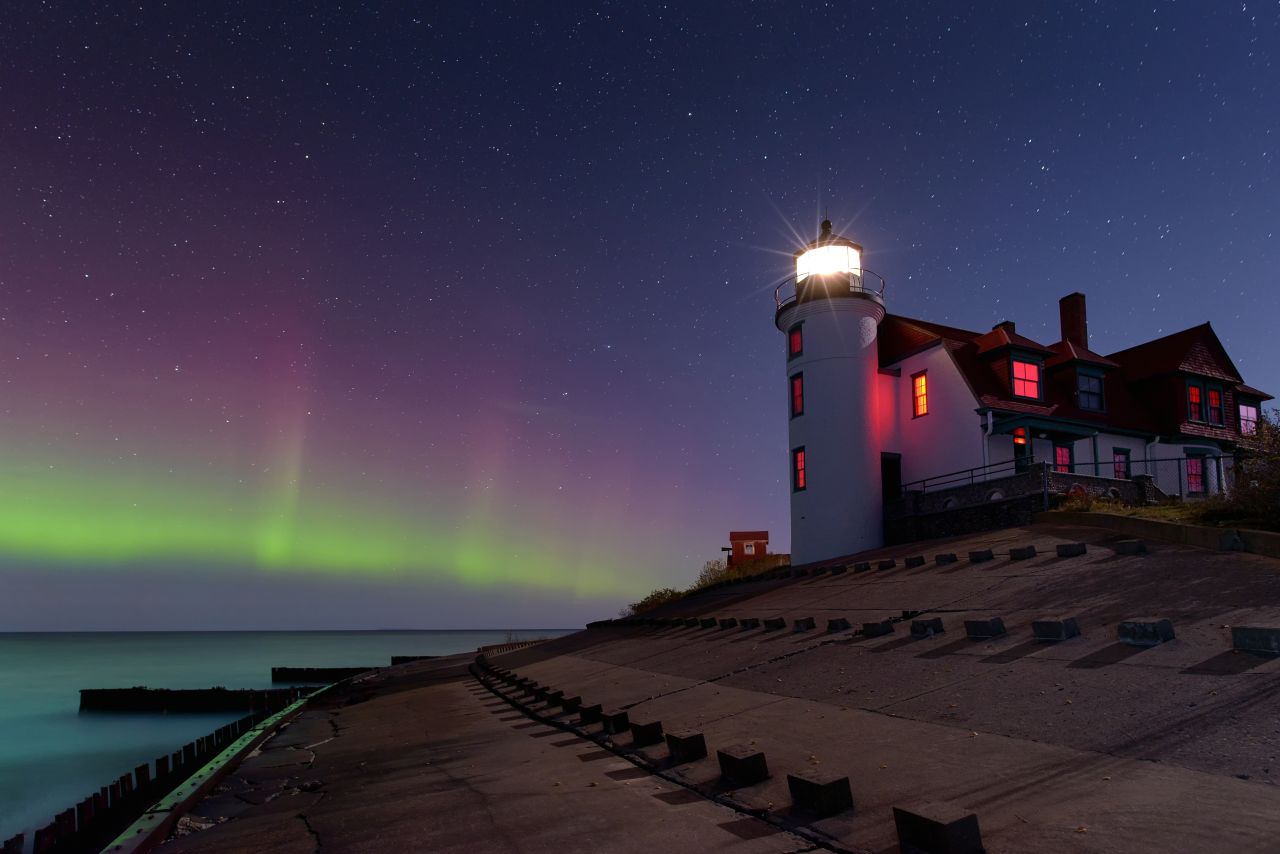

The Northern Lights Stunned the U.S. Last Night — And They Might Be Back Tonight 🌌
If you missed last night’s northern lights spectacle, you might still be in luck. A powerful solar storm, the kind that only comes around every few years, has charged Earth’s atmosphere, sending ripples of green, pink, and violet light dancing across the night sky as far south as Alabama, Texas, and even Florida. And the show may not be over yet.
Geomagnetic Storm Creates Widespread Light Show
From the Dakotas to the Carolinas, social media feeds exploded overnight with photos of swirling auroras that looked more like Alaska than the lower 48. Scientists say it was all thanks to a series of coronal mass ejections (CMEs), massive bursts of plasma from the sun that collided with Earth’s magnetic field and created one of the strongest geomagnetic storms in decades.
According to NOAA’s Space Weather Prediction Center, the storm reached a G4 level on the five-point scale, second only to the most extreme G5. That intensity allowed the aurora borealis to stretch deep into U.S. territory, painting rural farmland and city skylines alike in surreal shades of red and purple.
Shawn Dahl, a forecaster at NOAA’s Space Weather Prediction Center, said in a video posted to X that there is a “G4 watchout for the 12th of November,” adding, “It’s not often you see the aurora over Florida.” Dahl and other experts say an additional burst of solar energy could bring another round of auroras tonight if conditions stay favorable.
Springville, Utah
Photo Courtesy of Lynette Cummings
Baltimore, Maryland
Photo Courtesy of Mary Boblits
What to Expect Tonight
The sun isn’t finished yet. Another wave of solar energy is expected to hit Earth’s magnetic field today, which means skywatchers from the Midwest to the Deep South may get one more chance to catch the lights. Timing will depend on when the next solar shockwave arrives, likely midday, with effects lingering into the night.
If skies stay clear, the best viewing window will be after sunset and before midnight. Find a dark, open spot away from city lights, face north, and let your eyes adjust. Even if you don’t see bright color with the naked eye, your phone’s night mode might reveal streaks of green or red across the sky.
Franklin, Ohio: Photo Courtesy of Jenni Harlow
How to Capture the Northern Lights
Everyone loves to snap a photo when the sky puts on a show, and some of these moments are truly once in a lifetime. If you’re lucky enough to spot the aurora tonight, here are a few simple tips to help you capture it:
Use Long Exposure: Set your camera or phone to night mode and keep the shutter open for 5–30 seconds. This lets in enough light to bring out the aurora’s color and movement.
Keep It Steady: Rest your phone on a fence, car roof, or tripod so the shot doesn’t blur.
Go Dark: Move away from city lights and face north for the clearest view.
Include the Horizon: Add trees, hills, or a skyline for perspective. It makes your photo feel more dramatic.
Stay Warm and Patient: The best displays often come in bursts, so keep your camera ready and your gloves handy.
With a little luck (and a steady hand), you’ll walk away with a photo that looks as magical as the moment itself.
For most of the U.S., this week’s aurora has been a once-in-a-decade event, one that turned the night sky into a canvas of color. It’s rare to see the northern lights without crossing the Arctic Circle, rarer still to see them reflected in the windows of homes in Georgia and Texas.
If you missed it last night, don’t miss it again. Bundle up, step outside, and look north. The next time the northern lights sweep this far south could be years away, but for now, the universe is putting on a show worth staying up for.
FAQ: What You Need to Know About This Solar Storm
Why are we seeing the northern lights so far south?
Because of an unusually strong geomagnetic storm. Several coronal mass ejections from the sun hit Earth’s magnetic field almost back-to-back, amplifying the aurora’s reach.
Will there be another chance after tonight?
Possibly, though chances fade as solar activity slows. The strongest effects are expected to peak by tonight and taper off through Thursday.
Can I see it from a city?
Light pollution will make it difficult. Head somewhere dark, like a field, park, or lakeshore, for the best view.
What color should I look for?
Green is the most common, but depending on intensity and atmospheric gases, you might see pink, purple, or even red hues.
When will this happen again?
Solar activity runs on roughly 11-year cycles. The sun is currently near its “solar maximum,” so while this exact event is rare, more auroras may appear in the coming year.
We value your privacy
We use cookies to enhance your browsing experience, serve personalized content, and analyze our traffic. By clicking "Accept All" you accept this and consent that we share this information with third parties and that your data may be processed in the USA. For more information, please read our .
You can adjust your preferences at any time. If you deny, we will use only the essential cookies and unfortunately, you will not receive any personalized content.